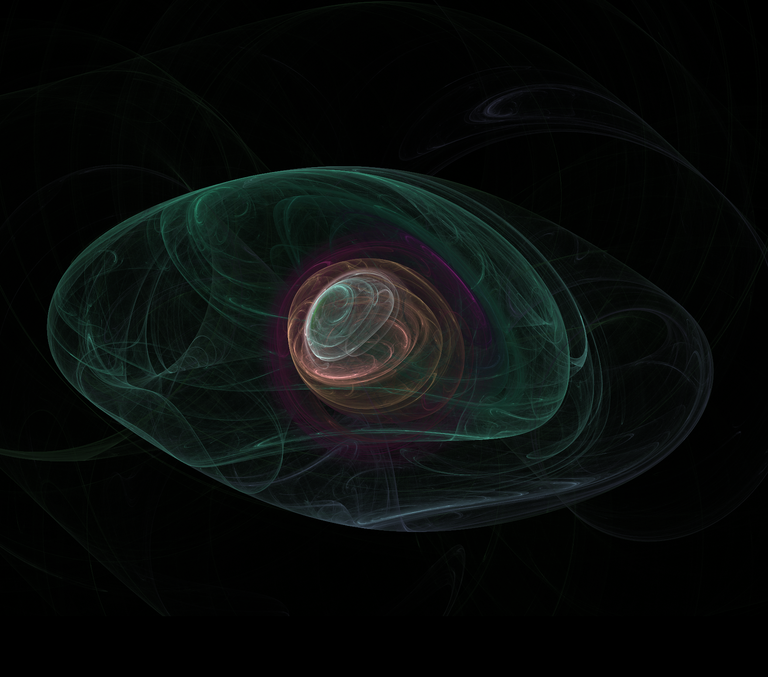
Captain Khadijah Biles-Dixon here, speaking for herself.
One of the things we are supposed to remember as fleet officers for the Earth-led consortium I serve: the beautiful things of space and time are not just the common heritage of Earthlings, but all living creatures. One of those beautiful things is the Eye of Tsulbbim, the stunningly beautiful planetary nebula above.
Other beings occasionally threaten to wipe us out because, unfortunately, Earthlings are the least likely to remember the need to protect life's common heritage and end up doing the most damage.
“We didn't have this kind of trouble when the Uppaaimar were the chief of their kind in space; when are they coming back?” – that whole conversation among more powerful and ancient civilizations than any humanity had produced by the 23rd century started when one of my uncle's angry old rivals cracked space-time because he was trying to prove the far-greater scientist wrong.
But, rarely in his now 101 years of life has Admiral Benjamin Banneker ever been wrong on a matter of great importance.
“It helps when you actually study and pay attention,” he says when asked about his record.
To the case at hand: a question had been open ever since it had been discovered that one can travel around the orbit of any star at high warp and go back in time relative to its orbit – every star's space-time vortex is a kind of portal.
The question was, since exceeding the speed of light was possible by many orders of magnitude, could regular items in space be accelerated to beyond the speed of light by a warp-capable ship while in “normal” operation? In other words, could a comet or asteroid or small planet be sped up to break the speed barrier and remain – probably as a ball of plasma, but still – in its regular orbit?
The question had come to the proverbial desk of a young Lieutenant Commander Banneker as part of a survey of a star system with a very large star – a red hypergiant, in fact – with a number of fast-moving planets bustling around it and even faster-moving comets of nearly the same size as the planets. The speed jump for some of the comets would not be that much relative to the acceleration necessary for them to achieve light speed.
There was just one problem, and Uncle Benjamin had discovered it. The feat could be done, but at a very, very high cost. Acceleration to warp requires controlled matter-antimatter interaction for the energy necessary – if one was going to substitute the gravitational effects of a very large star and a high warp field pushing an object around its orbital vortex for a warp engine, the antimatter has to still come from somewhere. The most likely way for that antimatter to come to light is for said object to be pushed through the space-time continuum and be converted to antimatter directly as a trans-warp object – max warp plus the gravitational “slingshot” – and the matter to start it moving would be every object close by.
Of course, the further consequence would be that there would be a “hole” in space-time, and the track of said object would be like a knife making a slit that kept getting bigger and bigger. Now, in an expanding universe, things are always stretching, but when a hole and slit are put into something already stretching, bad things can and will happen.
Uncle Benjamin's findings were classified at the time, but the other science officers who worked on the question with him and later reviewed it knew about them, and one of them got beside himself in later years when Uncle Benjamin's findings about the Lokusstrum Metamorphosis got Uncle Benjamin the fame he had long deserved. But –.
“Some people don't believe you should have anything in this life,” he said, “but, as ever, people like that are the ones who generally end up with dust.”
My uncle's old rival lost it, decided to prove my uncle was wrong about the findings, and ended up proving my uncle right, at the cost of his ship and crew, a whole star system, and countless man-hours from the professional, commercial, and salvage fleets.
The Eye of Tsulbbim is one of the things we saved, although the nearby ripple did excite and perturb its gases such that its colors changed and the “eyeball” became a bit more deep set...

… but today, the eye has returned to largely its former appearance.
My husband, Capt. Rufus Dixon of the commercial shipping company Kirk and Dixon Shipping, had rings made for me of both appearances of the Eye of Tsulbbim, and they remind me of the importance of the shared heritage humanity must care for in space, including the beautiful things for the joy of all beings.
Very cool! I love the explanation for time travel using stellar gravity wells 👌
I owe that to Star Trek the Original Series -- Capt. Kirk and the crew did at least three times... what we did not know in the 1960s was that IF THAT WERE POSSIBLE, every star has its own vortex ... so a BUNCH of different planetary histories are possible, all interacting in space-time, traveling UP or DOWN a star's past or PROJECTED path through the galaxy with its planets trailing it... it gets even more complex when you consider each planet in a stellar system has its own orbit, and so, its own "time" ... but, we gotta save some stuff for future stories ... thank you for reading, and if you like what you are reading, read on ... every Saturday barring an emergency on my end...
I will try to catch each instalment. I've got my own story happening too.. I've been working on visuals for it.
No pressure ... looking forward to see your next story too ... getting the visuals right is so important...